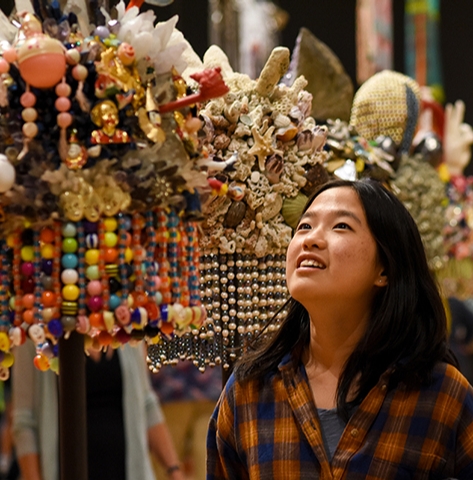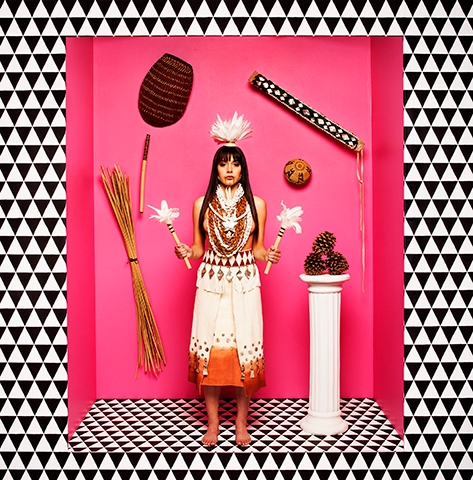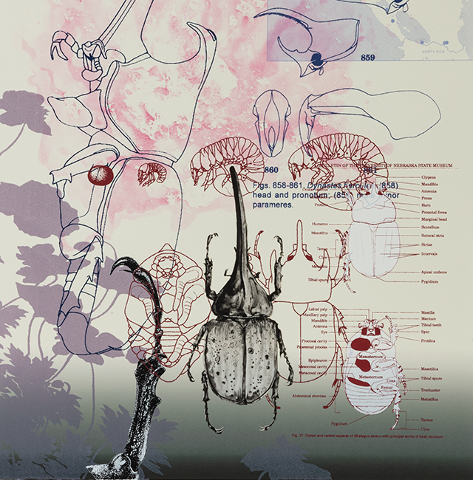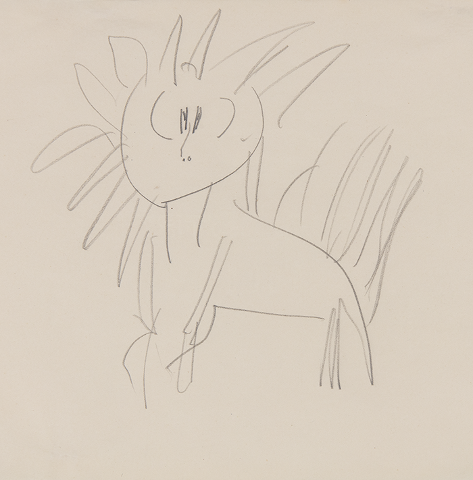© Janelle Rodriguez

President David Wippman, South African artist Berni Searle and Senses of Time Curator Karen Milbourne, engaged in a conversation about issues related to cultural identity in Africa on Oct. 18. Senses of Time, the current exhibition at Wellin Museum, includes two artworks by Searle: A Matter of Time and About to Forget.
Milbourne, a curator at the Smithsonian’s National Museum of African Art, asserted that Senses of Time demonstrates the capacity of video arts to address issues like racism, identity, decay and infrastructure in Africa.
Searle, who is now teaching at the University of Cape Town, had just left the riots at the South African campus before coming to Hamilton last week. Protesters in South Africa are demanding a decolonized education and the reduction of education costs in order to make it more accessible to low-income citizens who are predominantly black. Students have burnt artworks made by white artists in protest of the lack of attention or space dedicated for the exposition of ethnic art that reflects the black history of South Africa. These riots are essential for dismantling the ghost of colonization and taking more pride and interest in the independent cultural identity of South Africa.
According to Searle, people who come from mixed race in South Africa, including herself, are called “people of color.” As a child, Searle was told by her grandmother that “one day when you leave South Africa, you will realize that people love olive skin.” When Searle grew up, she formed two interpretations of this phrase: Outside of South Africa there is generally less racism, so people would be less judgmental of olive skin and that it was only a matter of time until things changed. “But to what extent have things changed in South Africa to allow free discourse about socio-political issues against which South Africans are protesting?” wondered Searle. This historical sluggishness is strongly articulated in Searle’s A Matter of Time (2003), where she is filmed repeatedly walking up a greasy glass plane and sliding back down to articulate the circular nature of time in Africa due to the persistence of social inequities.
Although A Matter of Time portrays a glimpse of Searle’s life, she does not think of it or her other works, as strictly autobiographical because she hopes it can speak to a broader audience and be portrayed in different contexts related to self-representation. On the importance of montage in video arts, Searle said that it is important that “the work evolves naturally without a lot of technical intervention in order to concentrate the viewer’s attention on the main content” rather than the editing effects.
Searle praised the display of her works at Wellin, saying that it gave her the chance to experience her art differently. Grouping the artworks of seven different artists, who did not make the works specifically for this exhibition and who have never met each other, establishes an informative context of socio-political issues in Africa. Creating an overarching theme for such diverse artworks emphasizes the artistry of curating, where Milbourne asserted that “it is important to elicit potential from the artwork without overriding artists’ visions with your own.” Senses of Time is meant to tell stories of “people we don’t know, whose images are not in the news and whose images flicker like the reflections of Egyptian citizens in Egyptian artist Moataz Nasr’s The Water,” said Milbourne.
The ongoing political demonstrations in South Africa emphasize the essential value of Senses of Time, that is, in Milbourne’s words, to “illustrate the history that led to current social issues and consider the future we’re trying to shape to ourselves.”
Milbourne concluded the conversation by affirming, to future student artists, that although it can feel challenging to tailor one’s own experience, “it is important to have the drive to understand a broader context of the issues you want to address.”







